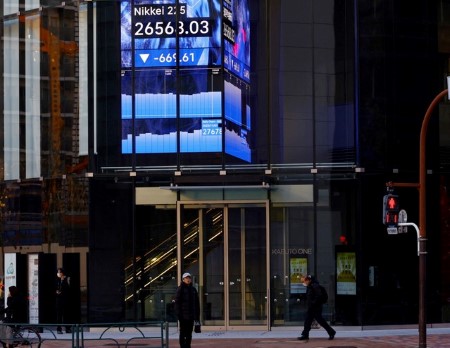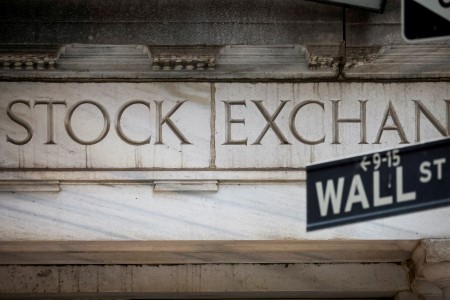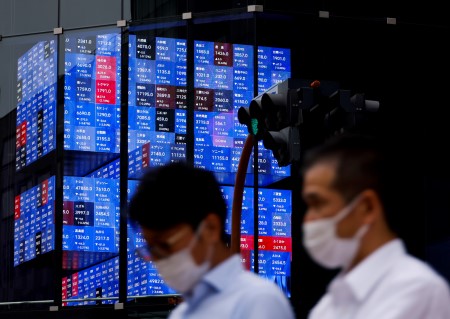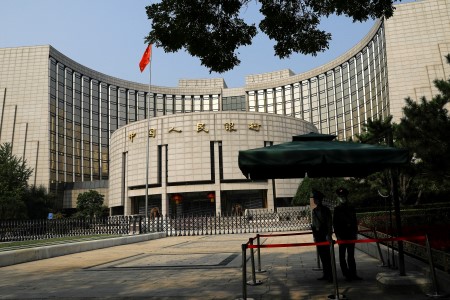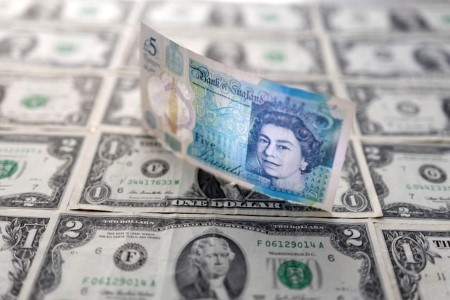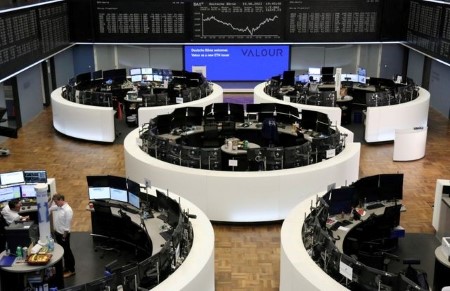June 21 (Reuters) – A deepening sense of caution descends over Asian markets as the trading week reaches its mid-point, as investors give a lukewarm reaction to China’s interest rate cut and await key remarks from Federal Reserve Chair Jerome Powell later on Wednesday.
Adding to the lackluster market tone and feeling among investors that the global policy tightening cycle is not yet over, UK inflation data on Wednesday will be closely watched ahead of the Bank of England’s expected rate hike on Thursday.
The Asian economic data calendar on Wednesday is light, with Japan’s tankan manufacturing index for June one of the few releases on tap and the one most likely to stir markets.
The Bank of Japan is one of two outliers among leading monetary authorities, and remarks from governor Kazuo Ueda on Wednesday could determine whether the yen pulls back from a seven-month low against the dollar, or extends its decline.
The other is the People’s Bank of China, which is now actually cutting rates for the first time in almost a year. On Tuesday it lowered key lending benchmarks by 10 basis points as officials seek to shore up a slowing economic recovery, but investors weren’t impressed.
The one-year loan prime rate (LPR) was cut to 3.55% and the five-year LPR was cut to 4.20%. Investors had hoped the five-year LPR would be reduced by more.
For the yuan, the PBOC was stuck between a rock and a hard place – more aggressive easing would further reduce the attractiveness of Chinese bonds, which is bad news for the yuan; a more cautious easing probably won’t give the economy much support, which is also bad news for the yuan.
The yuan has been trading through 7.00 per dollar every day since May 18 and is now approaching 7.20/dollar. Last October’s weak point around 7.30/dollar, a low not seen since late 2007, may soon come onto traders’ horizon.
On the Chinese corporate front, investors are digesting the news of changes at the top of e-commerce giant Alibaba Group. The company said on Tuesday its CEO and chairman Daniel Zhang will step down from the roles, which will be filled by Eddie Yongming Wu and Joseph Tsai, respectively.
China’s stocks are on the defensive, but they are not alone. The MSCI Asia-ex Japan index on Tuesday had its worst day this month; world stocks fell for a third day, their longest losing streak since early May; and Wall Street ended in the red.
The main global event for markets on Wednesday is likely to be Fed Chair Powell’s semi-annual testimony to the House Financial Affairs Committee. Investors will be parsing his words for any extra steer on the policy outlook, no matter how slight.
Here are key developments that could provide more direction to markets on Wednesday:
– Japan tankan survey (June)
– BOJ Governor Kazuo Ueda speaks
– Fed Chair Jerome Powell speaks
(By Jamie McGeever; Editing by Deepa Babington)







 DOWNLOAD
DOWNLOAD




